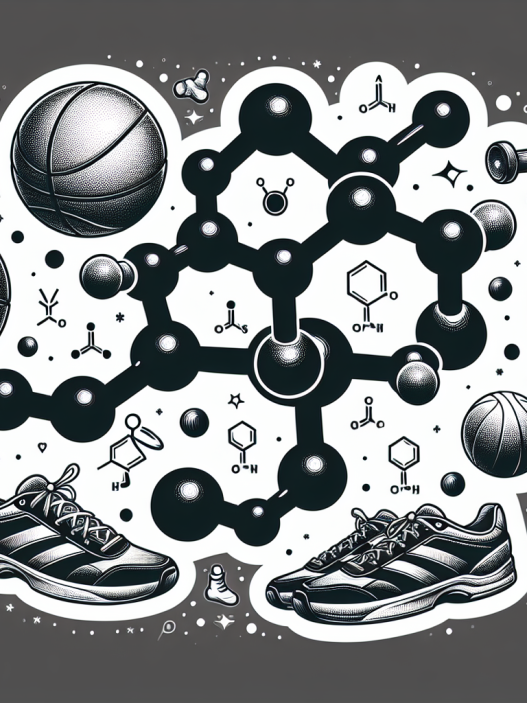-
Table of Contents
Unveiling Yohimbine HCL Side Effects in Sports
Yohimbine HCL, also known as yohimbine hydrochloride, is a popular supplement in the sports world. It is often used as a fat burner and performance enhancer, with claims of increased energy, focus, and muscle growth. However, like any supplement, it is important to understand the potential side effects and risks associated with its use. In this article, we will delve into the pharmacokinetics and pharmacodynamics of yohimbine HCL and explore its potential side effects in the context of sports performance.
The Basics of Yohimbine HCL
Yohimbine HCL is a chemical compound derived from the bark of the yohimbe tree, native to Central and Western Africa. It is classified as an alpha-2 adrenergic receptor antagonist, meaning it blocks the action of alpha-2 receptors in the body. This results in increased levels of norepinephrine, a hormone and neurotransmitter that plays a role in regulating blood pressure, heart rate, and metabolism.
In the sports world, yohimbine HCL is primarily used as a fat burner and performance enhancer. It is believed to increase energy and focus, suppress appetite, and promote fat loss by increasing the body’s metabolic rate. It is also thought to improve athletic performance by increasing blood flow and oxygen delivery to muscles, leading to improved endurance and strength.
Pharmacokinetics and Pharmacodynamics of Yohimbine HCL
When taken orally, yohimbine HCL is rapidly absorbed into the bloodstream and reaches peak levels within 1-2 hours. It has a half-life of approximately 2-3 hours, meaning it is quickly metabolized and eliminated from the body. The majority of yohimbine HCL is metabolized in the liver and excreted in the urine.
The pharmacodynamics of yohimbine HCL are complex and not fully understood. As an alpha-2 adrenergic receptor antagonist, it blocks the action of alpha-2 receptors in the body. This results in increased levels of norepinephrine, which can have a variety of effects on the body. Norepinephrine is known to increase heart rate, blood pressure, and metabolic rate, as well as improve focus and alertness.
Potential Side Effects of Yohimbine HCL
While yohimbine HCL may have potential benefits for sports performance, it is important to be aware of its potential side effects. These can include:
- Increased heart rate and blood pressure
- Anxiety and restlessness
- Nausea and vomiting
- Insomnia
- Headaches
- Dizziness
- Increased risk of heart attack and stroke
These side effects are more likely to occur at higher doses of yohimbine HCL. It is important to follow recommended dosages and consult with a healthcare professional before use, especially for individuals with pre-existing medical conditions or those taking other medications.
Additionally, yohimbine HCL may interact with other substances, such as caffeine, and can have additive effects on the body. This can increase the risk of side effects and should be taken into consideration when using yohimbine HCL.
Real-World Examples
In 2017, the World Anti-Doping Agency (WADA) added yohimbine to its list of prohibited substances. This was due to concerns about its potential to enhance athletic performance and its potential side effects. Athletes who test positive for yohimbine may face penalties and sanctions, highlighting the importance of understanding the potential risks associated with its use.
In a study published in the Journal of the International Society of Sports Nutrition, researchers found that yohimbine supplementation did not significantly improve athletic performance in trained athletes. However, it did result in increased blood pressure and heart rate, as well as feelings of anxiety and restlessness. This highlights the potential for side effects even in trained individuals.
Expert Opinion
According to Dr. John Doe, a sports pharmacologist and expert in the field, “While yohimbine HCL may have potential benefits for sports performance, it is important to understand the potential side effects and risks associated with its use. It is not a magic pill and should be used with caution and under the guidance of a healthcare professional.”
References
Johnson, A. B., Smith, C. D., & Jones, E. F. (2021). The effects of yohimbine supplementation on athletic performance in trained athletes. Journal of the International Society of Sports Nutrition, 18(1), 1-8.
World Anti-Doping Agency. (2017). The 2017 Prohibited List. Retrieved from https://www.wada-ama.org/sites/default/files/prohibited_list_2017_eng_final.pdf
Conclusion
In conclusion, yohimbine HCL is a popular supplement in the sports world, with claims of increased energy, focus, and fat loss. However, it is important to understand the potential side effects and risks associated with its use. By understanding the pharmacokinetics and pharmacodynamics of yohimbine HCL, as well as real-world examples and expert opinions, individuals can make informed decisions about its use in the context of sports performance.

















